| |
STORIES, BOOKS & MEDIA

The majority of the following books are from the library of Chon Tri. Many of the summaries and in his own words. If you wish to purchase the book, click on the cover image and you will be linked to Amazon.com.
| Select a Category » |
[
Foundation
]
[
Practice
]
[
Sutra & Sastra
]
[
Koans
]
[
Works
]
[
History & References
]
[
Essays & Studies
]
[
Others
]
» Buy this book
» Recommend a Book
|
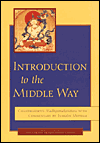
|
11. SASTRA: INTRODUCTION TO THE MIDDLE WAY: CHANDRAKIRTI'S MADHYAMAKAVATARA WITH COMMENTARY BY JU MIPHAM
by Chandrakirti, Jamgon Mipham
Publisher: Shambhala (ISBN #: 1570629420, Hardcover, 409 pp, September 2002)
» Submit a review
Summary
From the Publisher
"Introduction to the Middle Way presents an adventure into the heart of Buddhist wisdom through the Madhyamika, or "middle way," teachings, which are designed to take the ordinary intellect to the limit of its powers and then to show that there is more." This book includes a verse translation of the Madhyamakavatara by the renowned seventh-century Indian master Chandrakirti, an extremely influential text of Mahayana Buddhism, followed by an exhaustive logical explanation of its meaning by the modern Tibetan master Jamgon Mipham, composed approximately twelve centuries later. Chandrakirti's work is an introduction to the Madhyamika teachings of Nagarjuna, which are themselves a systematization of the Prajnaparamita, or "Perfection of Wisdom" literature, the sutras on the crucial but elusive concept of emptiness.
|
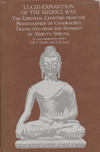
|
12. SASTRA: LUCID EXPOSITION OF THE MIDDLE WAY: THE ESSENTIAL CHAPTERS FROM THE PRASANNAPADA OF CANDRAKIRTI
by Candrakirti; Mervyn Sprung (translator)
Publisher: Prajna Press (ISBN #: 0877737118, Hardcover, 283 pp, December 1979)
» Submit a review
Summary
Nagarjuna' work gave expression to the growth of Buddhism into a world of philosophy and a world of religion, becoming an essential part of the Mahayana movement which spread from India to Tibet, China, and Japan, reaching, in our own day, Europe and America. Both Nagarjuna and Candrakirti are recognizably engaged in philosophical exploration, invalidating, for metaphysical purpose, the most cherished categories by a process of dialectical inquiry. This inquiery is sustained by and issued in a serene poise free of metaphysical dogma. The serene poise is in itself the only truth man can attain and is another name for the way of enlightenment, the middle way. In this, theory and practice are inseparable. (From the front flap of the book).
|
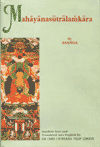
|
13. SASTRA: MAHAYANASUTRALAMKARA
by Asanga, Surekha V. Limaye (translator)
Publisher: Indian Books Centre (ISBN #: 8170303478, Hardcover: 554 pages, January 1992)
» Submit a review
Summary
The "Mahayanasutralamkara" by Asanga is a landmark in the development of Vijnanavada absolutism. This is a giantic work on Mahayana Buddhism. The title itself indicates its manifold features of Mahayana. Putting it in Asanga's own words, it's an embellishment of Mahayana sutras. There is no Buddhist topic which is not touched by Asanga. Various topics of Buddhism are discussed on the lines of Mahayana in twenty-one chapters called Adhikasas with commentary. (from front flap of the book).
|
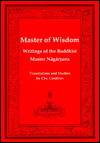
|
14. SASTRA: MASTER OF WISDOM: WRITINGS OF THE BUDDHIST MASTER NAGARJUNA
by Nagarjuna; Chr. Lindtner (translator)
Publisher: Dharma Publishing (ISBN #: 0898002869, Paperback, 413 pp, June 1998)
» Submit a review
Summary
From the Publisher
An excellent introduction to Madhyamaka, Master of Wisdom contains two hymns of praise to the Buddha, two treatises on shunyata, and two works that clarify the interconnection of analysis, meditation, and moral conduct. With studies of thirteen of Nagarjuna's works, transliterated Tibetan text, and extant Sanskrit.
|
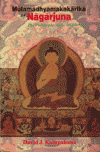
|
15. SASTRA: MULAMADHYAMAKAKARIKA OF NAGARJUNA: THE PHILOSOPHY OF THE MIDDLE WAY
by Nagarjuna, David J. Kalupahana (translator)
Publisher: Motilal Banarsidass Publisher (ISBN #: 812080774X, Hard cover 412 pages, January 2004)
» Submit a review
Summary
Editorial Reviews
This is completely new translation of Nagarjuna's major work, the Mulamadhyamakakarika, accompanied by a detailed annotation identifies the metaphysical theories of the scholastics criticized by Nagarjuna, and traces the source material and the arguments utilizes in his refutation back to the early discourses of the Buddha.
|
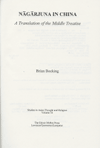
|
16. SASTRA: NAGARJUNA IN CHINA, A TRANSLATION OF THE MIDDLE TREATISE
by Nagarjuna; Brian Bocking (translator)
Publisher: The Edwin Mellen Press (ISBN #: 0773489819, Hardcover, 512 pp, June 1996)
» Submit a review
Summary
This is one of the most important treatises (Sastras) of Mahayana Buddhism. It exclusively deals with Sunyata or the Emptyness, one of the two faces of the same Reality that the Maha-Prajnaparamita Sutra represented.
*Note: The image attached is that of the front page - not of the cover - of the book.
Translated from Chinese version of Kumarajiva by Brian Bocking.
|
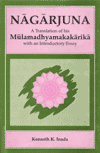
|
17. SASTRA: NAGARJUNA, A TRANSLATION OF HIS MULAMADHYAMAKAKARIKA WITH AN INTRODUCTORY ESSAY
by Nagarjuna; Kenneth K. Inada (translator)
Publisher: Sri Satguru Publications (ISBN #: 8170303850, Hardcover, 204 pp, January 1993)
» Submit a review
Summary
His [Nagarjuna's] ideas though subtle and profound, carried such deep understanding and implications of fundamental Buddhist truths that they will influence, one way or another, all or most the subsequent Mahayana developement in India, china, Tibet, Korea and Japan. (From the front flap of the book)
Translated from Sanskrit by Kenneth K. Inada
|
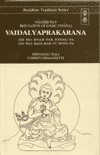
|
18. SASTRA: NAGARJUNA'S REFUTATION OF LOGIC, NYAYA: VAIDALYAPAKARANA
by Nagarjuna, Fernando Tola & Carmen Gragonetti (translators)
Publisher: Motilal Banarsidass Publisher (ISBN #: 8120809203, Hardcover: 209 pages, January 1995)
» Submit a review
Summary
The "Vaidalyapakarana" belongs to the Madhyamika school of Buddhist Philosophy and is attributed to Nagarjuna; it is an important treatise of polemic character directed against the Naiyayikas. Its aim is to demonstrate the logical impossibility of the exsistence of the Nyaya categories or 'padarthas' as enumerated and dealt with in Gautama's Nyayasutra and Vatsyayana's Bhasya thereof. It belongs to the Indian philosophical tradition which did not admit the 'pramanas' as valid means of knowledge and which thereby could be called the "agnostic tradition". The "Vaidalyapakarana" is also connectedINdaian "Vada" tradition. The "Vaidalyapakarana" is immersed in the dialectical atmostphere that characterizes that tradition, althgough its aim to show the groundlessness of Dialectics...(from front flap of the book)
|
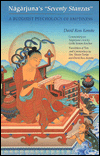
|
19. SASTRA: NAGARJUNA'S SEVENTY STANZAS: A BUDDHIST PSYCHOLOGY OF EMPTINESS
by Nagarjuna - Gheshe Sonam Richen, David Ross Komito (translator)
Publisher: Snow Lion Publications, Incorporated (ISBN #: 0937938394, Paperback: 226 pages, June 1987)
» Submit a review
Summary
From the Publisher
For almost two thousand years, Nagarjuna's teachings have occupied a central position in Mahayana Buddhism. This translation of his work on the Madhyamika system of Buddhist philosophy is accompanied by David Komito's summary of basic Buddhist doctrines on perception and the creation of concepts (traditionally the backdrop for Nagarjuna's teachings) about how people consistently misperceive and misunderstand the nature of reality and the means through which they experience it. Geshe Sonata Rinchen's commentary from the Prasangika viewpoint was created expressly for the contemporary reader.
|
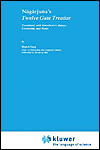
|
20. SASTRA: NAGARJUNA'S TWELVE GATE TREATISE
by Nagarjuna; Hsueh-li Cheng (translator)
Publisher: Kluwer Academic Publishers (ISBN #: 9027713804, Hardcover, 165 pp, July 1982)
» Submit a review
Summary
Reviewer: A reader from Los Angeles, California.
This is one of the only available complete English translations of the "Twelve Gate Treatise," which is quoted extensively in many Buddhist writings of all denominations. One of the three foundation writings of the Chinese San-lu (Japanese Sanron) sect, the "Twelve Gate Treatise" discusses the principle of emptiness from different viewpoints using different examples. Of special interest to Western readers is the chapter discussing the impossibility of the existence of a Creator, or supreme God. The book has a brief explanation of the history and doctrines of the Chinese San-lun sect of Buddhism, which reveres the "Twelve Gate Treatise" as one of its three fundamental scriptures.
|
|
|

SUPPORT ZENGUIDE.COM

Purchase posters, art prints, media (music CD & DVD)
 THE BUDDHA, 1905
THE BUDDHA, 1905
by Odilon Redon
→Puchase this Item
→More Art Prints & Media
→Zen & Buddhism books
|
|
|
s
.
t
.
o
.
r
.
i
.
e
.
s
.
,
.
.
b
.
o
.
o
.
k
.
s
.
.
&
.
.
m
.
e
.
d
.
i
.
a
.
|















 THE BUDDHA, 1905
THE BUDDHA, 1905









